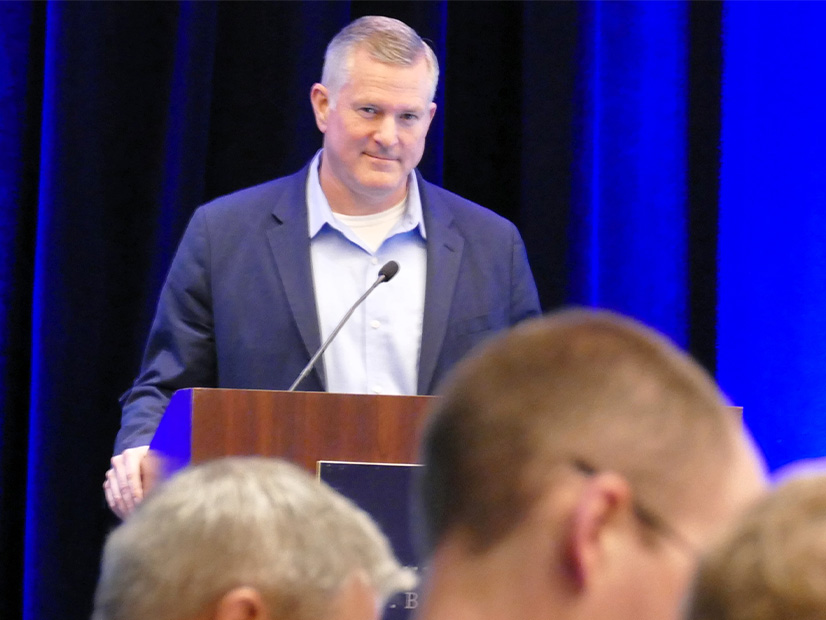FERC Commissioner Willie Phillips, who chaired the agency for two years, announced April 22 that he was leaving the agency just over a year before his term was set to expire, after pressure to resign from the White House.
In news first reported by POLITICO, the White House asked Phillips to step down. The move gives President Donald Trump the power to nominate a new commissioner, shifting its partisan balance to three Republican appointees and two Democrats, the standard make-up of a fully staffed FERC that gives the party in the White House a majority.
FERC Chair Mark Christie released a statement, noting the two had known each other for years before becoming federal regulators as they both were on state utility commissions that were active in the Organization of PJM States, Inc. (OPSI) and at NARUC.
“Willie has been a good friend for whom I have tremendous respect and affection,” Christie said. “He is a dedicated and selfless public servant. As I have said many times, he did an outstanding job as chairman of FERC. He and I worked together on many contentious issues to find common ground and get things done to serve the public interest. We will miss him here at FERC.”
Christie wished Phillips continued success on “whatever career path he chooses” after leaving the commission.
Phillips posted his own statement on LinkedIn, saying it was time for to move on after being a regulator for 12 years, which includes his tenure at the Public Service Commission of the District of Columbia.
“As my time at FERC comes to a close, I’m proud of all we’ve accomplished to advance a more reliable and affordable energy future for all Americans,” Phillips said. “Our grid faces growing challenges — from surging demand driven by data centers, to resource adequacy, capacity markets and the urgent need for transmission reform. These complex issues demand bold, innovative solutions, and I look forward to continuing to work on them in the next chapter of my journey.”
The other three FERC commissioners all released statements praising Phillips for his work on the commission, but his departure was criticized by longtime agency watcher and Public Citizen Energy Director Tyson Slocum.
“Commissioner Phillips’ decision to voluntarily leave his seat a year early hands control of FERC to the White House, where Trump’s radical plans to abuse national security and emergency powers will now likely no longer feature meaningful FERC opposition,” Slocum said. “Phillips had an opportunity to ensure an independent check on Trump’s abuses, but he apparently decided he has better things to do than ensure the public interest is protected.”
While the president can name the chair at FERC, current legal precedent holds that commissioners can be fired only for cause.
The chairs of other regulatory agencies that fall under that precedent, including the Securities & Exchange Commission, the Federal Communications Commission and the Federal Trade Commission, all stepped down when Trump took office this January. The chair stepping down if the opposite party won the presidential election used to be the norm at FERC, but it started breaking down before Trump took office in 2017.
A spat between President Obama and the Senate Energy and Natural Resources Committee left FERC with only three Democratic members when Trump took office and without a quorum when he demoted Norman Bay from chair, who resigned in response. Then after President Joe Biden took office, two of Trump’s former chairs — Neil Chatterjee and James Danly — both served out their full terms.
Chatterjee posted on X when the news broke that Phillips’ departure was disappointing, and he noted that the differences between commissioners at FERC usually are not partisan. Phillips pushed through new LNG export facilities when the Biden White House issued a pause on approvals from the Department of Energy, and he was the lone dissenter on a data center co-location deal last year when Republican colleagues voted to deny it. (See FERC Rejects Expansion of Co-located Data Center at Susquehanna Nuclear Plant.)
FTC Chair Lina Khan stepped down in January, but last month Trump fired two other Democratic appointees to the agency who are challenging that in court.
Speaking at the Colorado Legislature in March shortly after Trump fired him, FTC Commissioner Alvaro Bedoya said he was not focused on the status of the law, or respect for Supreme Court precedents.
“I think we need to be focused on the billionaires over President Trump’s shoulder at his inauguration, and what this attempt will do for them,” Bedoya said. “Because I think above all else, we need to be asking ourselves, who will win from this attempt to illegally remove us?”
Those included big tech executives like Tesla and X’s Elon Musk, Meta’s Mark Zuckerberg and Amazon’s Jeff Bezos, all of whom were subject to court orders or litigation from FTC cases, he added.
Trump has not made any moves on the two Democrats left on FERC, and doing so now would leave the agency without a quorum and unable to move on key policy priorities like ensuring data centers can reliably connect to the power grid or expanding LNG exports.
“What could happen is that if the president has the authority to remove members of the FTC, I would think there is nothing that would constrain the president from moving members of FERC if the president so desired,” former Chair Bay said at the WIRES Group Spring Meeting on April 3.
Bay also made the point that when he was on the agency, the split votes were more likely to happen between Democrats than across party lines.
“That was the world I came from, but I think that was really important for FERC authority, for its legitimacy, for the regulatory stability and certainty provided to industry,” Bay said. “And, so, what I hope does not happen at FERC is that you get a revolving door of commissioners based upon changes in presidential administrations.”



